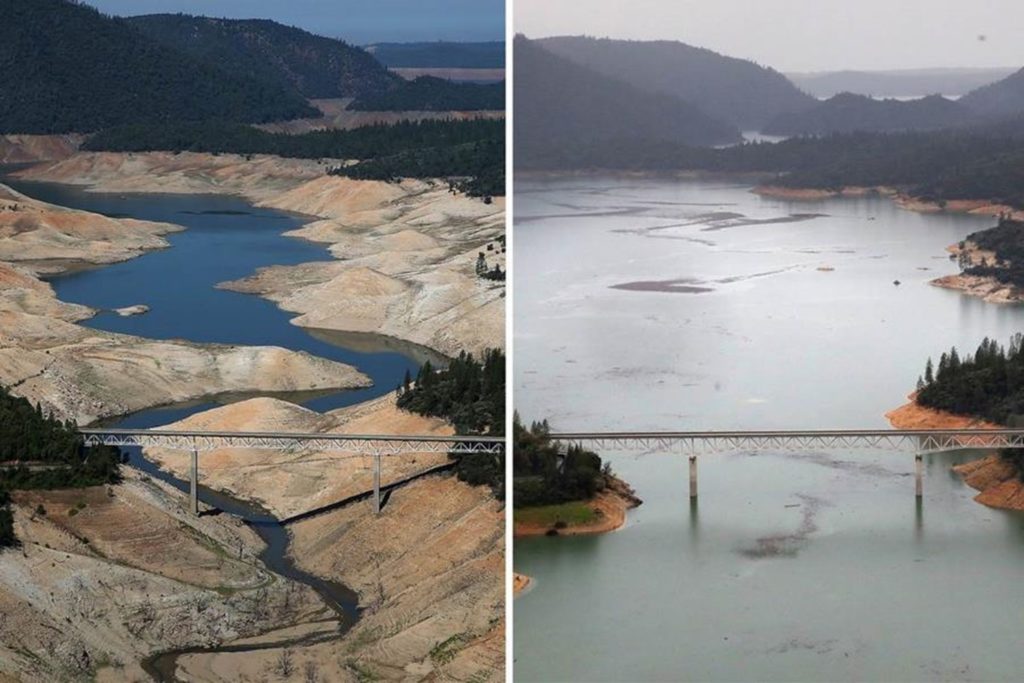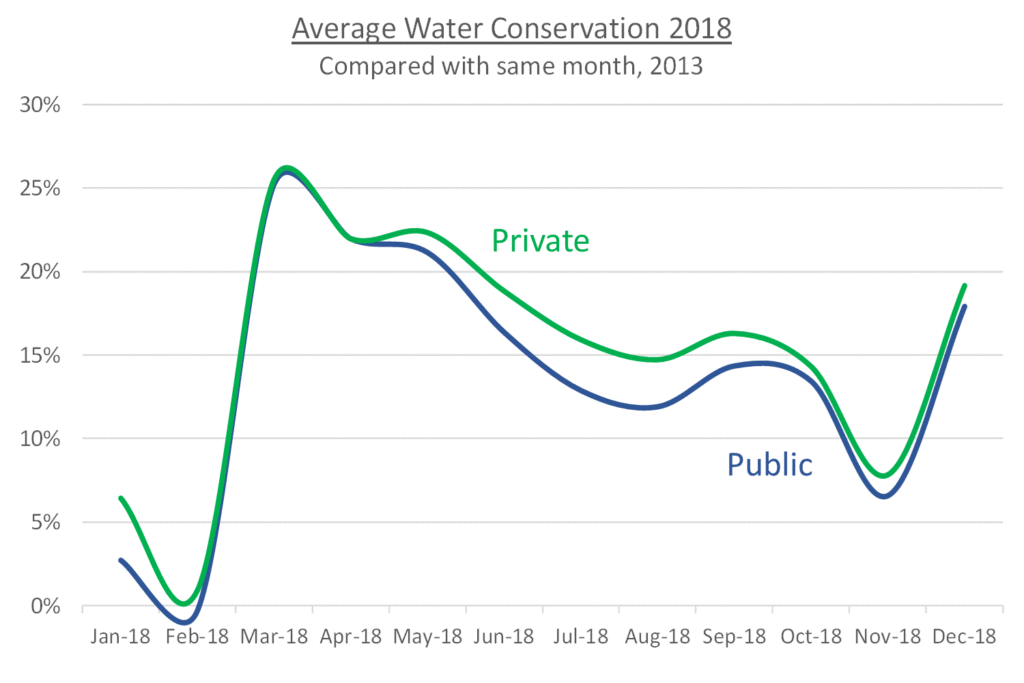A California surprise: update

California has been enjoying a great deal of rain and snow over the past several months—a pleasant rebound in precipitation after the brutal drought that plagued the state from 2011-2017. It’s now early 2019, reservoirs are full, the mountain snowpack is deep, and water managers in the Golden State are breathing easier than they have in a long time. Though water use has crept up since the end of the drought, overall water consumption remains lower than its pre-drought levels.
A California surprise
A surprising finding emerged from my analysis of California’s drought data with Youlang Zhang and David Switzer: the state’s private, investor-owned utilities conserved significantly more water than did local government utilities during the crisis. We linked the difference in drought response to the institutions that govern water finance. Nerds interested readers can read the full study in Policy Studies Journal for the details.
In a blog post last summer, I observed that a public-private conservation gap of 2-3% persisted in 2017 even after the drought ended, and wrote that financial imperatives would likely cause the trend to continue:
This consistent public-private difference lends greater weight to the idea that rate decoupling facilitates water conservation for private utilities, and that political constraints hamper public sector conservation. If 2018 holds to form, public and private conservation will converge in the spring and diverge again in the summer and autumn.
If financial and political considerations are really behind the public-private differences in conservation, then it stands to reason that the greatest differences would come during summer months, when water demand–and therefore rate revenue–fluctuations are greatest.

Now that full 2018 data are posted, it’s time to revisit conservation performance for the Golden State’s water utilities. Was the forecast valid? Did private systems conserve more than public systems again last year?
Are my water conservation predictions any better than my NCAA Tournament picks?*
Update
Overall urban water use remained significantly lower in 2018, with average monthly conservation of about 14% compared with 2013. The public-private disparity in overall conservation also persisted. This graph plots average conservation (relative to the same month in 2013) for public and private utilities from January-December 2018:

As you can see, public and private conservation moved in pretty close parallel through 2018, but private utility conservation was consistently higher than public. The difference was negligible during winter months, but during the May-September peak demand season, California’s investor-owned utilities saved an average of 2.3% more than their local government counterparts.
As always when discussing water, it’s important to give percentages some context. Had public utilities saved at the same rate as private utilities in 2018, the difference would have been about 27 billion gallons—more water than San Francisco uses in a year.
Decoupling, man. Decoupling.
The persistent seasonal swing in public-private water conservation suggests that the difference is due to differences in outdoor irrigation behavior. That the pattern is now consistent over three years adds to the mounting evidence that rate decoupling encourages conservation for investor-owned water systems.
This isn’t a story of environmental angels or devils, it’s about governance institutions and the incentives that they create. In light of the political challenges of managing local government water finance, it’s impressive that public utilities have continued to conserve as much as they have—a testament to local water managers’ commitment to efficiency in the face of political headwinds.
*They could hardly be worse. I didn’t get a single Final Four team right.
